Mountain Melodies - Live Music every Sunday dinner from October 12th to December 14th Book Now!
Wildlife Watching
Discover the diverse wildlife of Kananaskis Country, including moose, elk, bears and more. Learn when and where to see wildlife in Kananaskis, and how to stay safe.
Wildlife in Kananaskis
Kananaskis Country is a nature lover’s paradise, home to a diverse range of wildlife and some of Canada’s most iconic animals animals like moose, elk, and bighorn sheep, as well as predators such as black bears and coyotes. Birdwatchers will enjoy sightings of eagles, hawks, and songbirds. Spring and summer offer prime wildlife viewing as animals emerge from winter, while fall and winter bring unique opportunities to observe seasonal behaviours and tracks in the snow. No matter the season, there are year-round wildlife viewing opportunities in stunning Kananaskis.
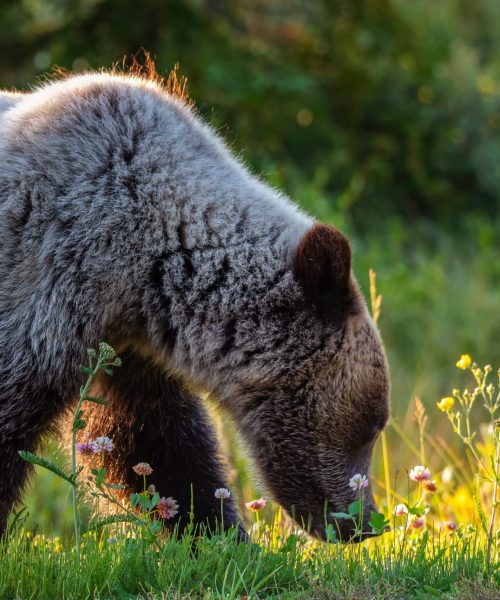
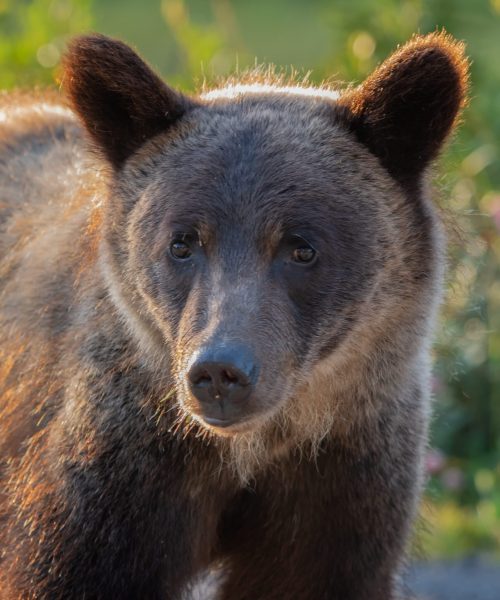
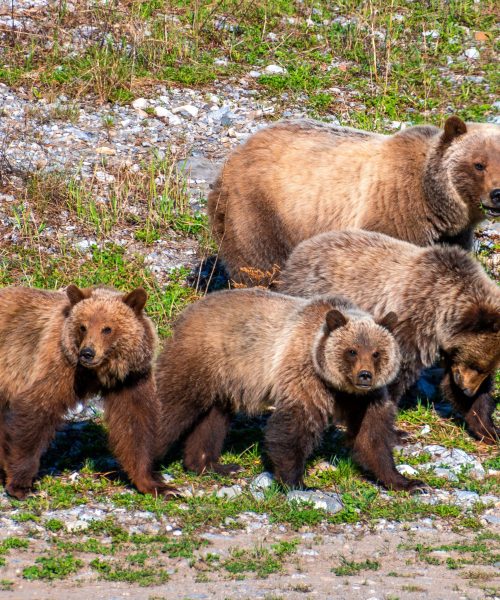
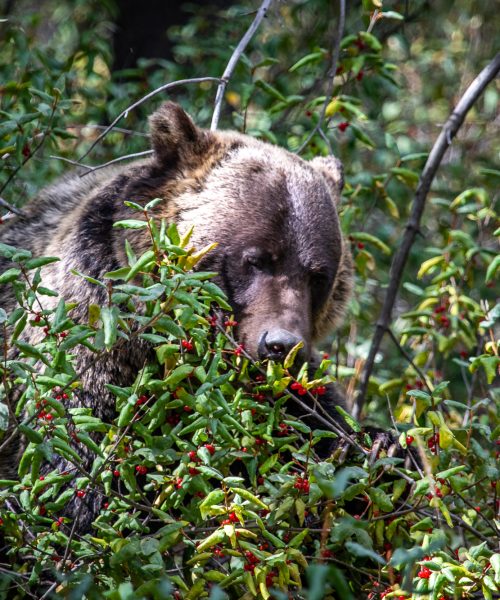
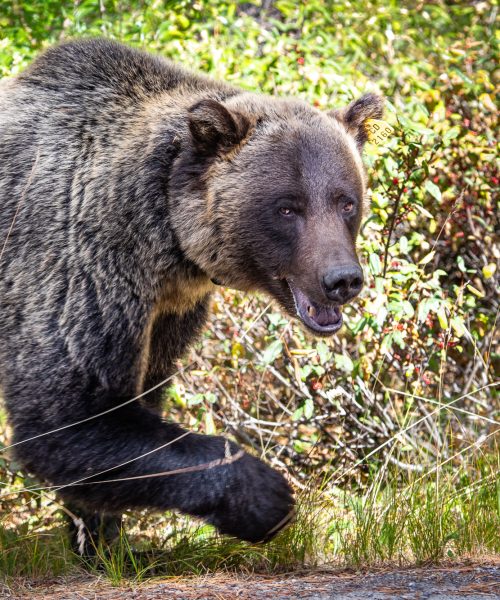
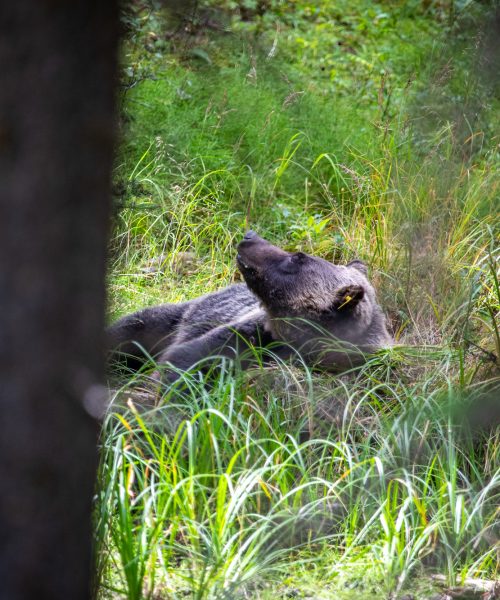
Grizzly Bears & Black Bears
Both black bears and grizzly bears call Kananaskis home, and though sightings are not guaranteed, the chance to see one of these powerful creatures is always exciting.
Spring and early summer (April to June) are the best times to see bears, as they emerge from hibernation in search of food. While it’s thrilling to observe bears in their natural habitat, always maintain a safe distance, and never approach them. If you do encounter a bear, make sure to stay at least 100m away, and remain calm and quiet. Read more about bear safety tips from Parks Canada and Alberta Parks.
Fun fact: bears love eating dandelions! It’s common to see bears eating dandelions along the side of Highway 40 and Highway 742 (Smith-Dorrien Trail) in the spring and early summer.
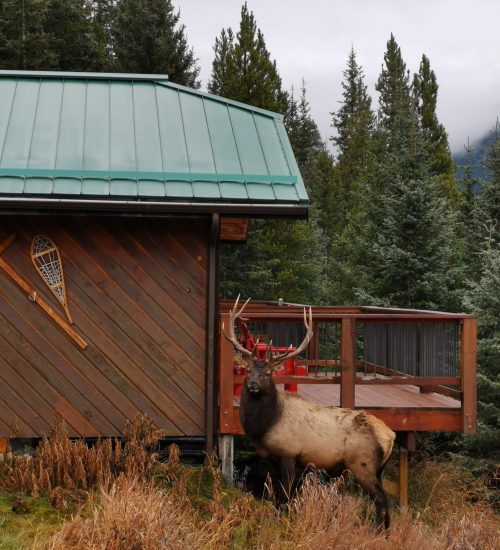
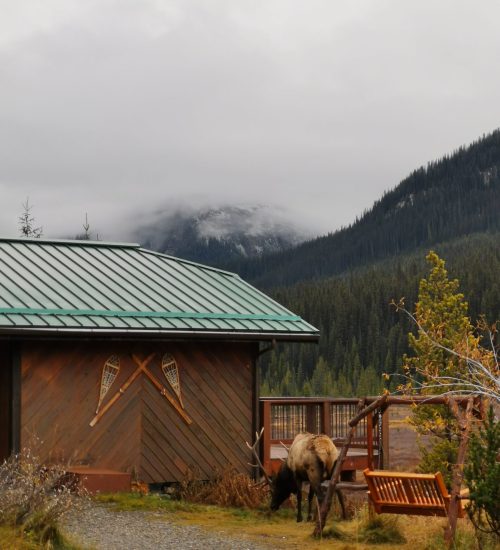
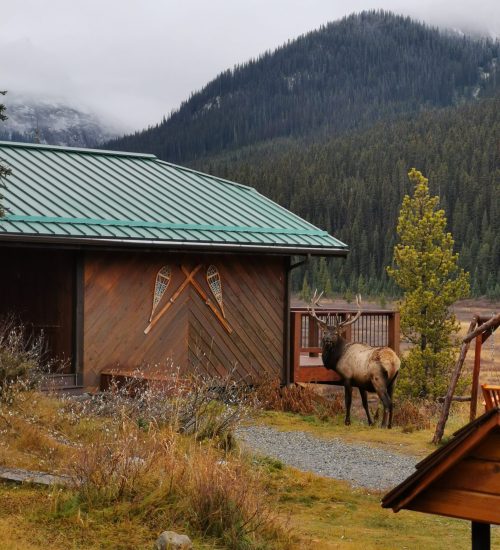
Elk
Elk are another common sight in the Kananaskis area, especially in the valleys near Mount Engadine. They are often seen grazing in open fields or near the forest edges during dawn and dusk.
These majestic animals, are known for their bugling calls during the fall rutting season (September to October). Their haunting calls echo across the valleys, making for an unforgettable wildlife experience.
Elk can be extremely aggressive towards humans, especially aggressive during rutting season (September to October) and birthing season (May to June). If you see an Elk, be cautious and stay at least 50m away.
Fun fact: an elk’s stomach has four chambers – the first stores food and the other three digest it. (Source)
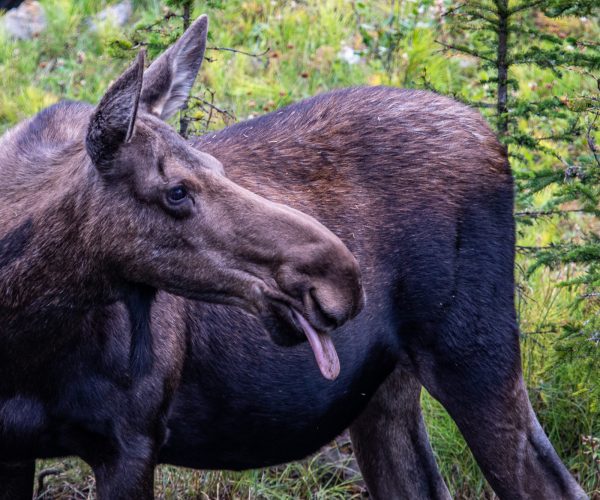
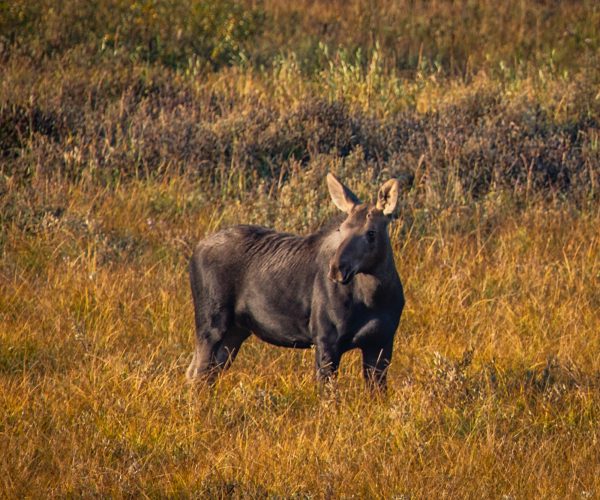
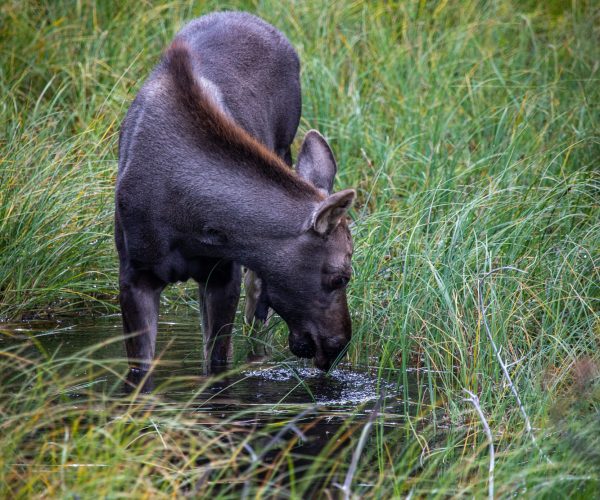
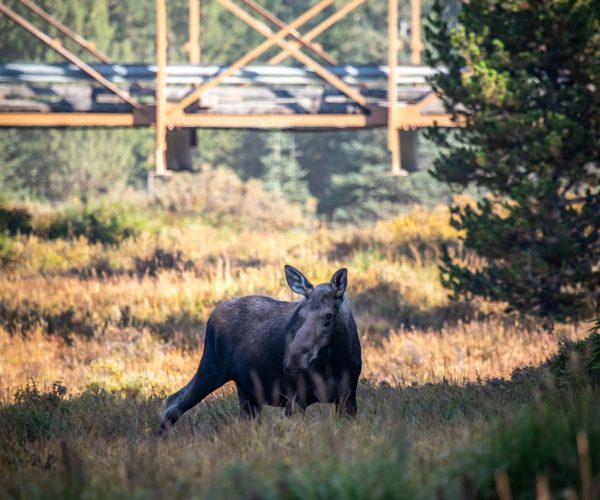
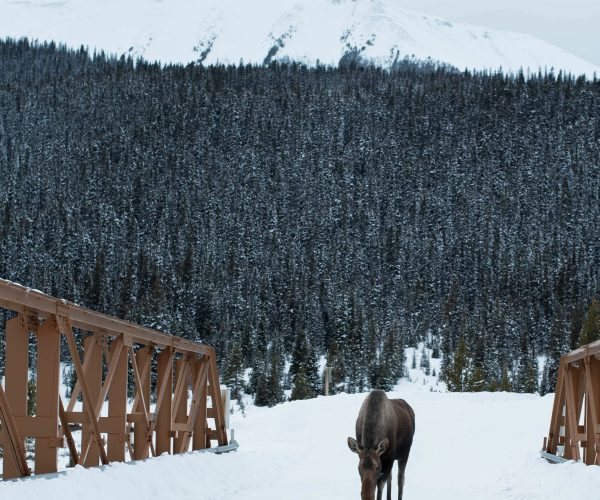
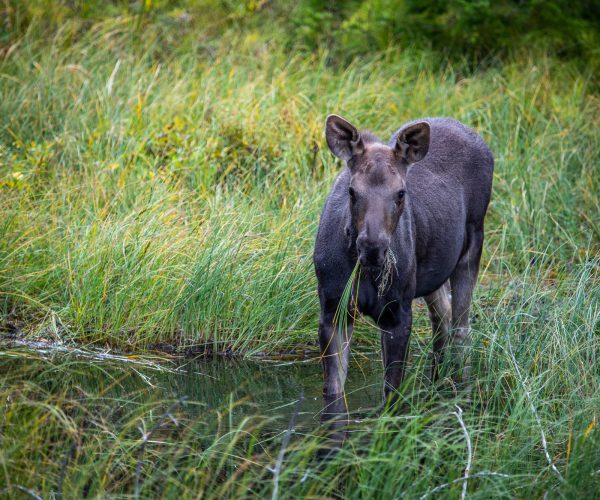
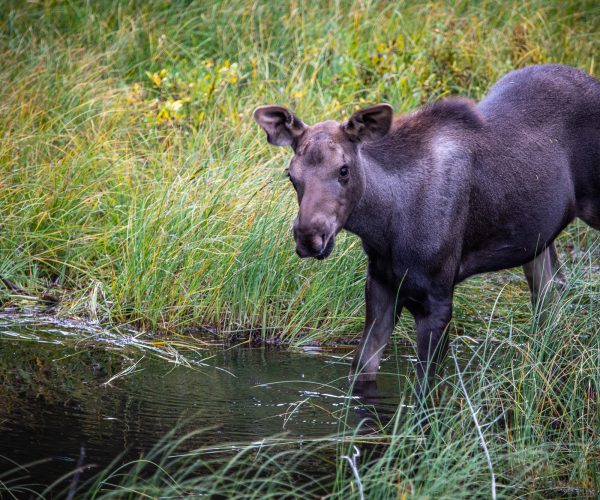
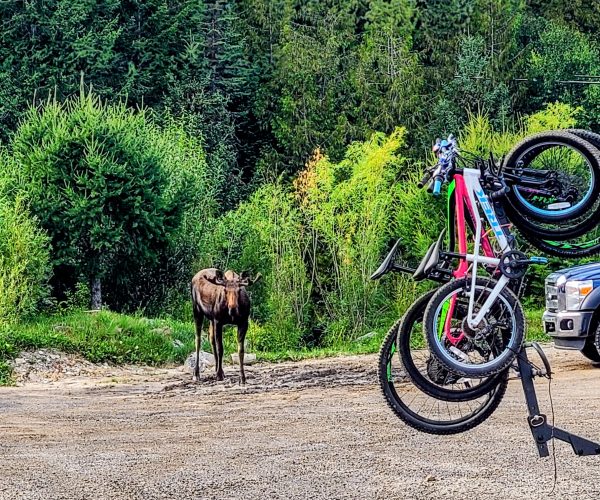
Moose
The moose is a frequent and awe-inspiring visitor in the Kananaskis region. Known for their towering size and impressive antlers, these solitary creatures often roam the meadows and wetlands surrounding Mount Engadine Lodge. Guests may spot them grazing in the early morning mist.
With their long legs and distinctive silhouette, moose are a breathtaking sight, particularly during spring when mothers are often seen with their calves. Be sure to watch from a distance of at least 50m, as these gentle giants can be surprisingly fast when startled.
Fun fact: Bull moose (males) have huge antlers than often span up to 1.5 meters. (Source)
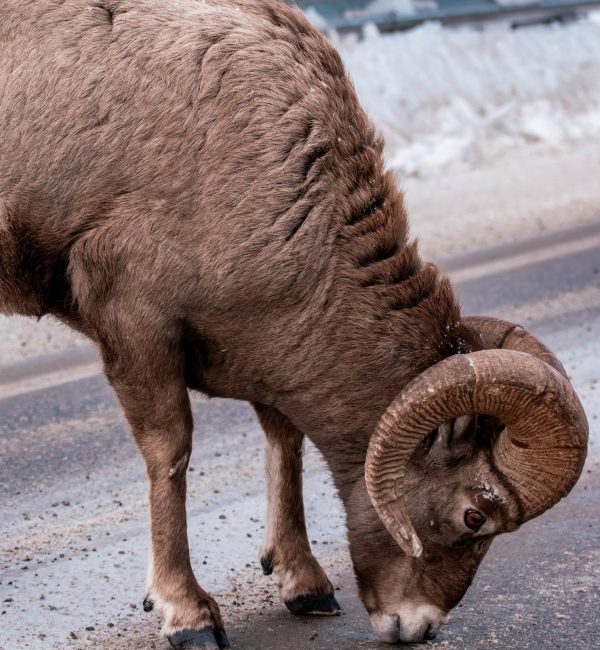
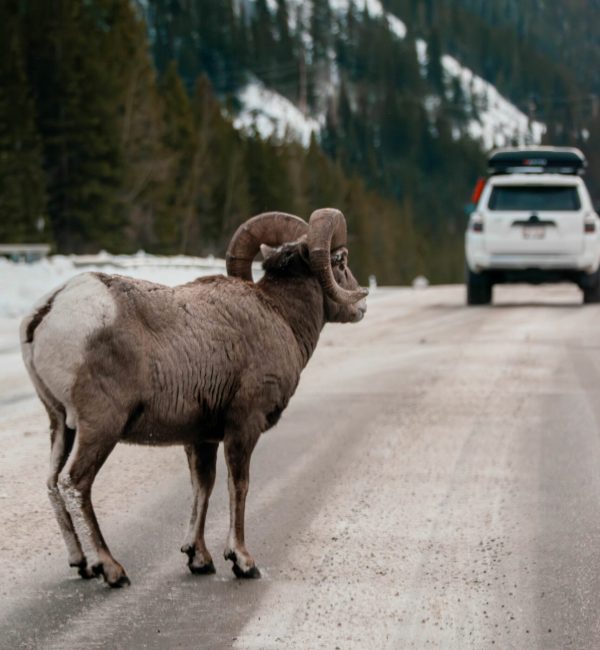
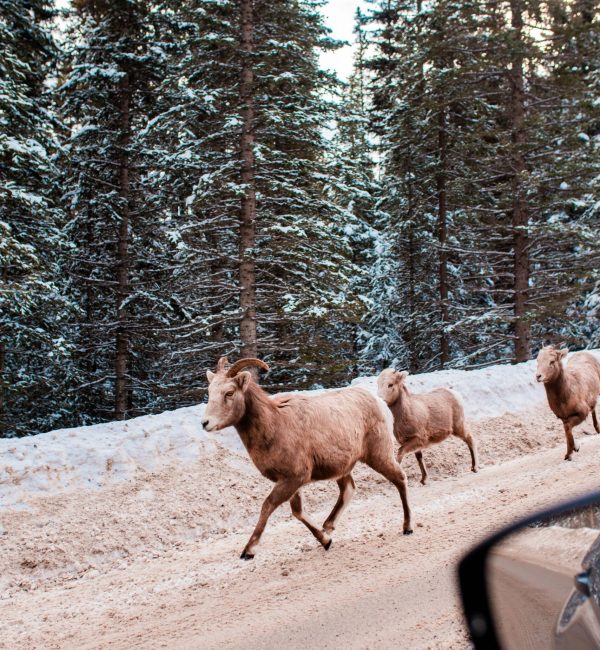
Bighorn Sheep
Bighorn sheep are a striking sight in the Kananaskis region, often seen navigating the rugged cliffs and steep mountain slopes with ease. They are also often seen on Highway 40 licking salt off the side of the highway!
The male’s iconic curved horns, which can weigh up to 30 pounds, make them easy to identify. These agile climbers are typically found in small groups and are most active during the early morning or late afternoon. Spring is a great time to observe bighorn sheep as they move to lower elevations to graze on fresh vegetation. Keep your eyes peeled for them along rocky outcrops or near alpine meadows as they graze or rest in the sunshine.

Mountain Goats
Mountain goats are renowned for their remarkable agility and sure-footedness on the steep, rocky slopes of the Kananaskis region. With their thick white coats and black, sharp-pointed horns, they are perfectly adapted to the alpine environment.
These elusive animals are often spotted at higher elevations, expertly climbing cliffs and crags in search of food. Spring offers a rare opportunity to see them descend to lower altitudes as they forage for fresh vegetation. Whether grazing on the mountainside or resting on rocky outcroppings, mountain goats are a captivating sight for wildlife watchers.
Fun fact: Mountain goats are not actually goats – they are not in the same genus as goats. Rather, they are part of the Boviadae family which are in the same family as antelopes, gazelles, and cattle. (Source)
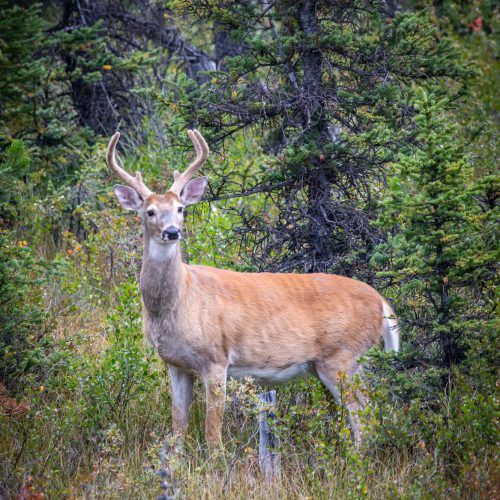
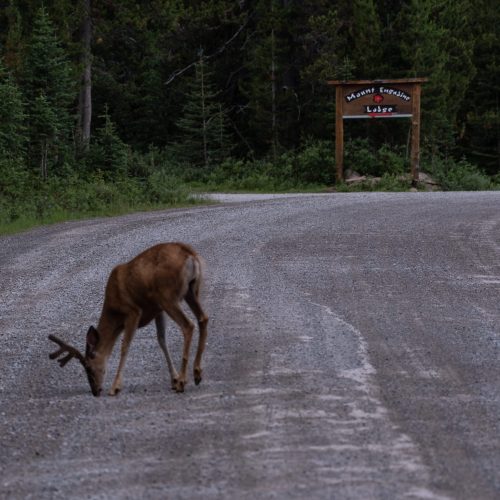
Deer
Deer are a common sight in Kananaskis, gracefully roaming the forests and meadows. Keep an eye out for mule deer and white-tailed deer, especially during dawn and dusk when they are most active.
Fun fact: only male deer (bucks) grow antlers, which they shed and regrow each year in the spring.
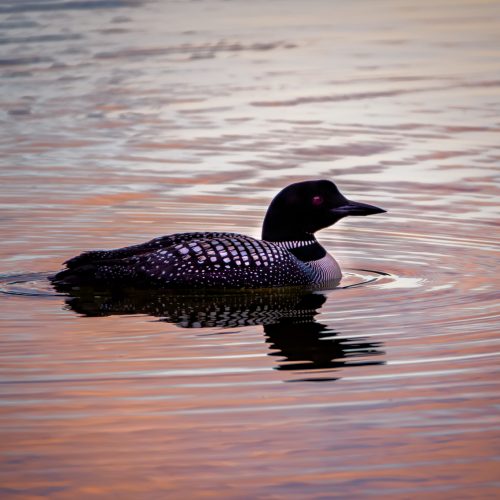
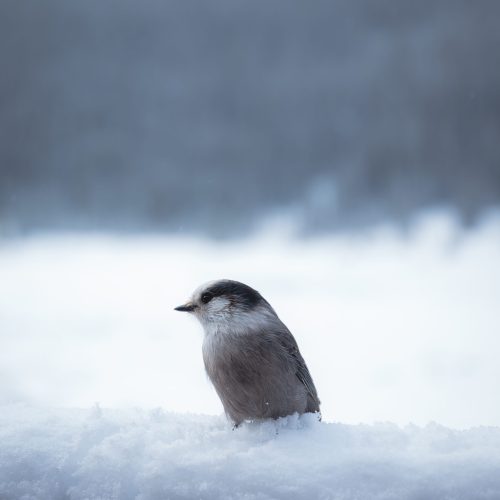
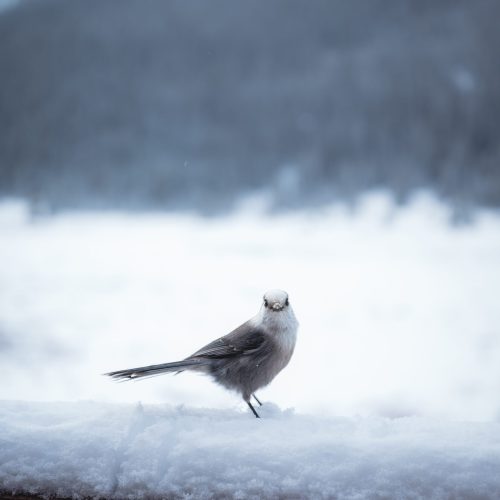
And Many More...
Kananaskis is home to so many beautiful creatures that you can encounter on your adventures. Makes sure to also keep an eye out for the haunting calls of coyotes and wolves, the adorable but elusive lynx, smaller creatures like marmots and pika, and countless species of birds like the Whiskey Jack, as well as ravens, eagles, and owls.
Wildlife Watching at Mount Engadine Lodge
Nestled in the heart of Kananaskis, Mount Engadine Lodge offers a premier wildlife-watching experience. The surrounding wilderness serves as a natural corridor for wildlife, giving guests the chance to observe animals directly from the lodge’s deck or while exploring nearby trails.
Our remote location provides guests with easy access to view a variety of animals in their natural habitats, from moose and deer grazing in the meadows to mountain sheep on the side of the road, and even the occasional bear.
Spot a variety of wildlife from your drive to the lodge (Highway 40 & Highway 742), from your guest room, or while enjoying Afternoon Tea & Charcuterie on our patio (available to overnight guests and day visitors with a reservation).

Wildlife Watching Tips
To make the most of your Kananaskis adventure, follow these tips to have the best chance at seeing wildlife while staying safe:
- Be quiet and patient: Wildlife tends to avoid noisy areas, so keep quiet and remain still when observing animals.
- Stay at a safe distance: Always respect the animals and their space. Use binoculars or a camera with a zoom lens to observe them without disturbing their natural behaviours.
- Best times for viewing: Early mornings and late evenings (dawn and dusk) are often the best times to spot wildlife at any time of year, as this is when they tend to feed.
- Carry essentials: Bring binoculars, a camera, and a wildlife guidebook to help identify species.
- Follow safety guidelines: If you encounter large animals such as bears or elk, maintain a safe distance. Never try to feed wildlife. Keep your dog on a leash. Always carry bear spray when exploring the trails of Kananaskis, and keep it in an accessible location as bears are very common in the area (and bear spray can be used on other types of wildlife like elk and cougars if needed). If you encounter a bear, stay calm, do not run, and slowly back away while keeping the bear in sight. Check the Alberta Parks Trail Reports for advisories and closures, and follow the Alberta Parks Wildlife Viewing Guidelines.
Other Natural Phenomena in Kananaskis
Discover the best times to explore Kananaskis with our seasonal highlights. Whether you’re chasing golden larch trees in the fall or enjoying snow-covered trails in the winter, each season brings a unique beauty and set of adventures to enjoy right from Mount Engadine Lodge. For more detailed information on what to do in Kananaskis in each season, check out our seasonal adventure guides.

Summer Wildflowers
As the snow melts, the trails come alive with vibrant wildflowers, creating a stunning display in the alpine meadows. In the summer between mid-June to mid-August, keep your eyes peeled for a colourful array of blossoms along the trails, especially later in the season. Common species include alpine lupine, Indian paintbrush, fireweed and columbine. If you’re looking for wildflowers, check out areas like Chester Lake, Burstall Pass, and our very own Mount Engadine Meadows. See our Kananaskis Hiking & Sightseeing Guide for more information.

Autumn Larches
Experience breathtaking golden larch trees during autumn in Kananaskis. Late September to mid October is the best time to witness this stunning transformation as the landscape bursts with vibrant colours. Check our our special guide for the best larch hikes in Kananaskis to ensure you don’t miss out on this special time of year!

Chinook Weather System
While the temperature can dip pretty low during the winter in Kananaskis, Alberta is famous for it’s sunny blue skies. If you’re lucky, you may also visit during a chinook, a unique weather system, which brings warm (almost summer-like) temperatures in the middle of the winter. But no matter the temperature, there will always be a piping mug of hot cocoa (or something stronger) waiting for you at the end of the day at Mount Engadine Lodge!

Frozen Methane Bubbles
A rare and unique phenomenon that occurs in lakes around Alberta in the winter when water-dwelling bacteria feed or decaying organic matter and expel methane gas, and then the water freezes, suspending large white bubbles in the ice. This spectacle is most commonly seen between mid-January to mid-February. The key is to catch it when the lakes are not covered in snow. Two of the best spots to see this phenomenon in Kananaskis are at Spray Lakes and Barrier Lake (as photographed by the well-known local photographer Paul Zizka). Learn more in our Winter Activities Guide.

Incredible Night Skies
Kananaskis, and the area around Mount Engadine in particular, is excellent for stargazing. Even though it is not officially one of Canada’s Dark Sky Preserves, it is far from any sources of light pollution, allowing for clear, dark skies and stunning displays of celestial wonders. Summer is the best time to see the Milky Way, and winter is the best time to see the Northern Lights. Learn more in our Stargazing Guide.
Looking for a basecamp for your Kananaskis wilderness adventure? Consider an all-inclusive stay at our rustic mountain lodge, cabins, and glamping tents – with stunning views and pristine trails right at your doorstep.
